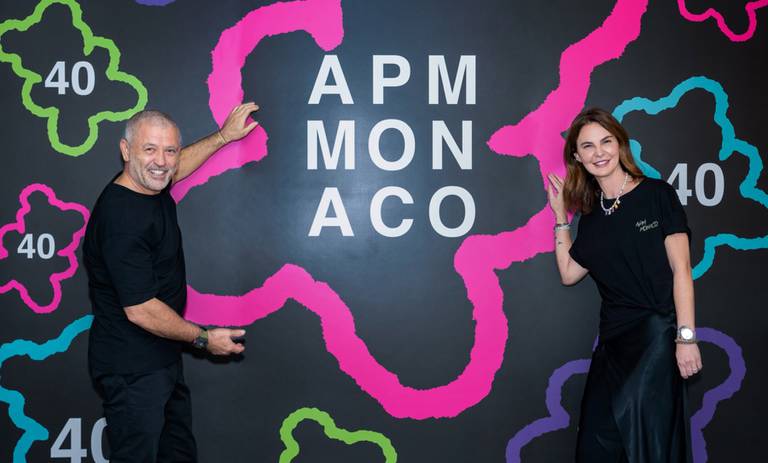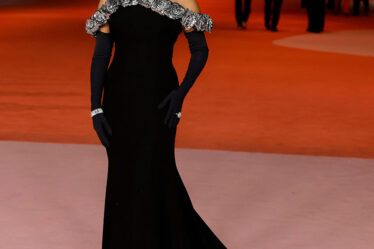
APM Monaco was launched in Monaco in 1982 by mother and son duo Ariane and Philippe Prette, as a manufacturer of gold, diamonds and precious stones.
Thirty years later, Philippe Prette — now CEO of the business — has made a brand out of APM Monaco with his wife Kika Prette as chief creative officer. The brand seeks to combine the strengths of manufacturing and fashion. Within a year, they opened their first store in Cannes before expanding worldwide.
With 2,300 employees across 6 production sites and 380 stores, as of today, all APM collections are created in-house. The brand produces 12 collections a year, operating a fast-paced creative environment in a vertically integrated business model — over 2.5 million jewellery pieces were manufactured in 2021, with about 1 million stones set on a daily basis.
All operations in the business are guided by the real-time insights gleaned and shared by the IT and data team, driving a seamless interaction between creation, manufacturing, supply chain and sales teams to reduce lead time and waste.
As APM Monaco celebrates its 40th anniversary this year, BoF sits down with Philippe and Kika Prette, CEO and chief creative officer respectively, to learn how the company’s culture and employee development strategy has sustained its impressive growth trajectory.
How are APM Monaco’s values reflected in your company culture?
KP: Our team is the core value of the brand and it is important to us that they believe in what they do, whether in retail, the offices or in our production sites.
In many big companies, there are a lot of set boxes in terms of career progression, and employees have to fight to get into the next box. We have never faced that at APM — as we grow rapidly, we give our employees the room to explore their potential.
For example, in my creative team, I have people that came in as interns who now oversee whole departments. We give opportunities and guide people to grow — and we have a strong referral programme, with about 50 percent of our hiring based on referrals.
How are you integrating more sustainable workflows and production processes?
KP: The elephant in the room these days is overconsumption, overproduction, waste, and all that entails. Addressing this issue has always been a part of APM’s concept, but these days, others use it as a marketing tool.
At our brand’s inception 10 years ago, the concept was a drop system, with a different collection every month taking after the fashion industry model. The downside to a drop model is often massive production, but we thought this through — because our business works vertically, we can introduce new collections 12 times a year, but produce just enough to supply the stores and meet demand quickly when we need to.
Our team is the core value of the brand and it is important to us that they believe in what they do.
Because everything is digitally tracked and connected in real-time, we know what sells, where and when. If a collection doesn’t work well, it will fade away. If it works, it will stay and become a part of the core collection. In 2021, we launched the Wonderland Programme that offers: a 2-year warranty; a lifetime repair option; and a recycling programme. If you simply don’t like something anymore, you can bring it back, we will recycle it — silver and zirconia melt back down — and you receive 15 percent off the original price.
PP: This is the secret: the in-house, vertical system we have, offering zero time in between the logistics, the transportation, the production, and everything is down to our IT system.
Why is technology such an important aspect of the company’s operations?
PP: We have one IT system that connects everything in the company, and a big data system operated by a team of about 70 people — a separate team from the website. We rely on technology, even though all the jewellery is set by hand. It allows for the seamless interaction of logistics and production. We update and upgrade the system all the time to optimise stock management in each store, and we don’t miss anything.
As a result of our advanced technology, we are actually classified as a technology company in China, even though we are in production. The way we apply the technology to the production, especially in replenishment, is what allows us to launch one collection per month and sell everything — we never have discounts, sales or anything like that.

What learning and development opportunities do you offer?
KP: Learning and development happens on a daily basis. One of our strengths is being vertical, because we go from concept to design to production to retail. By keeping everything together, each team has the power to see who’s where and learn in-house.
PP: Employee performance is also measured on various factors. The results of the retail team, for example, are not only based on sales, but on client satisfaction. For me, a written customer survey is the most important indicator of skill, and it provides key information to evaluate the employee. If they fall behind criteria, we know their area of weakness and we can help with training to catch the weakness.
How do you encourage collaboration at APM?
KP: In Hong Kong and Monaco, where we have offices, we have created open spaces for increased collaboration and communication among teams. It’s important that employees understand what others are doing, and to be closer to the people they work with.
Across all our production sites, we have restaurants, cafeterias and a gaming area with foosball tables. There is a priority programme for employees’ family members, through which we offer internships to the kids of our production workers, which can be in offices or stores as well as in the production sites.
This is a sponsored feature paid for by APM Monaco as part of a BoF partnership.



